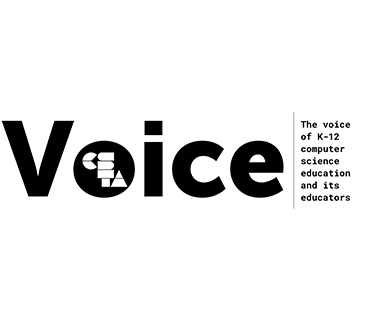After 25 years of teaching computer science (CS), I’ve witnessed a few changes. My first computers at Baraboo High School only had floppy drives and no network or internet access. Students learned Pascal, followed by C++ and then Java.
Full Story
After 25 years of teaching computer science (CS), I’ve witnessed a few changes. My first computers at Baraboo High School only had floppy drives and no network or internet access. Students learned Pascal, followed by C++ and then Java. At one point, the district discussed distance learning, but then it moved to online learning. By 2008, I taught my first online class and Baraboo High School had an online program. I have taught AP CS online ever since.
In those early years, I was the online program coordinator, online coach, and teacher. I received online teacher training through the Wisconsin eSchool Network (WEN) and became the “network” AP Computer Science for WEN. Being the network teacher meant I had students all over the state of Wisconsin. Students had a local online coach checking their progress and working with me to coordinate any issues.
Now, over ten years later, I teach face-to-face CS classes for Reedsburg Area High School. On nights and weekends, I work for the Wisconsin Virtual School (WVS) and teach Intermediate Programming, AP CS, and hopefully AP CS Principles next year. I keep my online teaching load around 30 students, so I still have time for family life.
Online teaching is very different from classroom teaching. I rarely meet my students. I communicate with them through discussion boards, phone calls, emails, and comments I leave in the assignment dropbox. I use discussion-based assessments over the phone to assess learning. While it is hard to get to know students through a phone call, I do get a glimpse of their personalities. When students struggle, they can’t raise their hand to get my help. Instead, they email me, schedule a phone call, or come to my online Connect Time for conferencing. I sometimes make a video tutorial to walk through a program or concept. Screenshots work well in emails. I encourage students to work through problems, but when they send me a problem, I redirect their learning and give hints on fixing issues. I require final exams to be proctored by the local schools.
While I make it a goal to be flexible with my online students, I also know the importance of unplugging from technology. While students can call anytime and leave me a message, I encourage them to schedule calls with me. During the school week, I grade almost every night. I typically grade at least once during the weekend.
The online AP Computer Science curriculum I use is purchased from Florida Virtual School (FLVS). Since the FLVS course is approved by the College Board, the audit process is easy. I don’t have to plan the sequence or scope, but I do provide additional resources when needed.
My Intermediate Programming class was initially developed by Georgia Virtual School (GAVS). WVS contracts with me to update some GAVS courses over the summer. I am currently restructuring the Intermediate Programming course to improve the scope and sequence of the curriculum. I am trained by Quality Matters, an organization dedicated to improving online curriculum.
Just as the CS classroom teachers in Wisconsin are building a great professional learning community, WEN and WVS collaborate nationally with other online programs. The Wisconsin Digital Learning Collaborative is a partnership with WEN and WVS to provide high-quality curriculum in blended and online environments. They provide summer training for teachers and work with teachers to blend the world of online learning with traditional classroom learning. I enjoy going to the face-to-face trainings each summer and connecting with the other online teachers. I believe my teaching load gives me the best of both worlds. I see my Reedsburg students every day and I have the privilege to help other students obtain access to a CS class.
About the Author
Ronda Kopfhamer teaches computer science at Reedsburg Area High School and for Wisconsin Virtual School. She was Online Learning Coordinator for the Wisconsin eSchool Network from 2013-2014 and President of the Wisconsin eSchool Network from 2012-2013.

